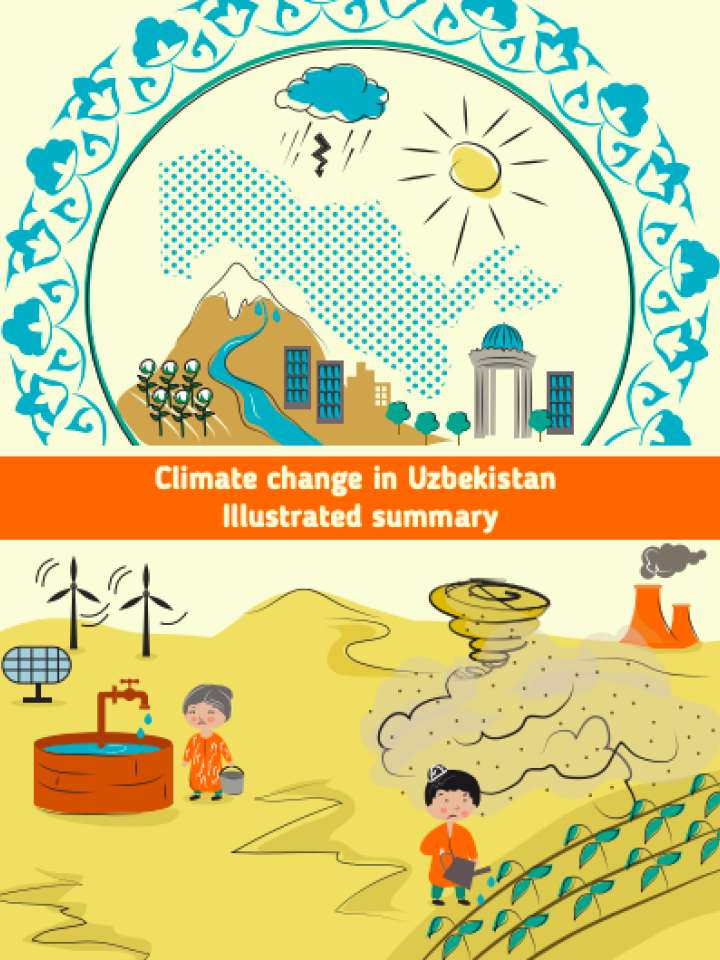Climate change in Uzbekistan: Illustrated summary
This document illustrates climate trends and developments in Uzbekistan on the basis of images.
Uzbekistan is particularly vulnerable to climate change, and in the absence of additional measures, the nation may face deficiencies in water resources and an increase in land degradation. Climate warming has reduced snow cover and increased evaporation, and Uzbekistan is experiencing an ever greater risk of water deficit. An increase in the frequency and intensity of droughts may lead to instability in agricultural production and threaten the country’s food security. Uzbekistan’s populated areas and important infrastructure can be affected by heatwaves in summer, floods and mudflows in spring, and avalanches in winter. The lower Amu Darya River suffers from unreliable water supply and salt-anddust storms.
Adaptation projects in Karakalpakstan — an area considered among the most vulnerable to climate impacts in Uzbekistan — are helping farmers to modernize irrigation networks, introduce drought resistant crops and diversify sources of income. In the Zeravshan basin, farmers are receiving soft loans to build greenhouses, improve the reliability of the water supply and improve horticultural practices. The Uzbek Government is supporting modernization of hydrometeorological services, and the CAMP4ASB project contributes to the expansion of the automated weather observation network.
Explore further
